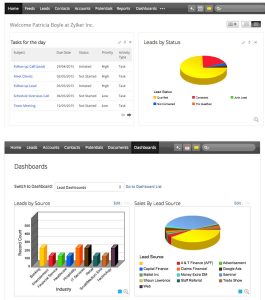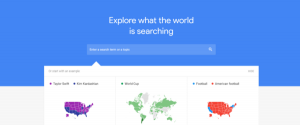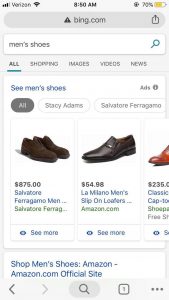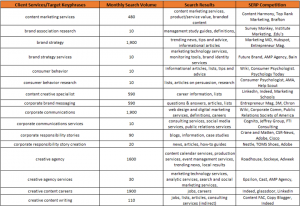Celebrity is dead. Long live the influencer. Until they become a celebrity. Then they’re dead again.
I was at a conference last night entitled The Power of Influencer Marketing, hosted by Youzz, an online marketplace that matches brands with relevant influencers, and where a few home truths about our current climate were realised. We are, it was said, in an influencer economy, but the attitudes of some brands have yet to properly embrace this.
Things have taken a bit of a deviation from tradition
Citing the Neilsen Global Trust in Advertising 2015 report, the introductory talk pointed out that TV advertising is still the most trusted form of paid promotion. But that’s mainly because there are a lot of young people (like me, obviously…kind of) that still watch TV. There’s a whole post-millennial generation (Z?) behind us – two of whom, I should say, formed part of last night’s closing Q&A panel – that pointedly do not. And these are the consumers of tomorrow.
From perfume to pants
The model of what we now commonly call ‘influencer marketing’ is no new thing, of course. Celebrities and personalities have advertised everything from perfume to pants pretty much since the dawn of TV and radio. But as with everything in this modern world of marketing, things have taken a bit of a deviation from tradition.
These are the consumers of tomorrow
It’s generally accepted that people don’t pay much attention to TV advertising anymore, and that was certainly the overarching theme to a Snapchat conference I recently attended. So a celebrity endorsement can feel slightly moot on a TV screen, and is perhaps an unnecessary drain on the company wallet.
But that only tells half the story. We are in fact at a point where that model has been all but turned on its head. It’s now more akin to traditional PR, rather than celebrity endorsement. In a marketing world that pivots itself around peer-to-peer review, user-generated content and better all-round transparency, YouTubers, Instagrammers and Snapchat heroes are the new journalists. If you want your promotion, you have to give them a good story. A story that they want to tell and one their audience believes in.
PR was always about interaction with influencers
David Fraser, founder of PR agency Ready10, in a new report from media database Gorkana, handily titled The Gorkana Guide to Influencer Marketing, says: “PR was always about interaction with influencers – traditional journalists – on behalf of a client and crafting a story or message in the right way so that it becomes justifiable for them to pass it onto their audience. It’s only the medium and the day job of the influencer that has now changed.”
Sacrificing cred
The problem with celebrities, it was said, is that they command high fees, don’t want their messaging to be controlled at all, and as such are difficult to work with (their words, not mine; forgive me, Scarlett Johansson).
As it turns out, the megabucks, 20-million-subscriber-strong YouTube stars fall into that bracket, too. They might have more reach, but they command a lot more pay and in so doing sacrifice some of their crucial credibility. What’s more, it’s thought that brands are beginning to wise up to the notion that these can just be vanity metrics.
Back in May this year, an unnamed social media executive said in a confessional interview with DigiDay: “Just because photos look good and have 200,000 followers means nothing. You can’t rely on content creators all day long. For the influencers, their entire business is about relationships and friendships.”
Brands are beginning to wise up to the notion that these can just be vanity metrics
Micro-influencers
With the relationship thing in mind, the attention from brands is now turning to the lower end of that spectrum. As Francisco Ascensao, CEO of Youzz, pointed out at (December 04, 2016)’s meeting, the ones with more influence and more credibility are the ‘micro-influencers’ – the smaller fry brand advocates that command far less pay (if any at all) or perhaps get a neat reward. Much in the same way as a fam trip is a perk for a travel journalist, for instance.
In any case, these are the people that want to try a new brand or product on the pure curiosity of seeing if the thing works. They’re organic, trustworthy and as such, valuable.
There’s a balance to be struck in terms of how and how often they’re paid or not paid. These influencers are inherently aware of themselves as a burgeoning brand and like to sustain a hearty mix of sponsored and organic content going out to their audiences, to sustain that credibility.
In the same way as a fam trip is a perk for a travel journalist
Those audiences, however, are under no illusions that sometimes a brand has paid for the message, and sometimes they haven’t; they don’t care, as long as the story’s good – as long as the brand looks cool. Often this involves the brand enabling a cool story to happen, in other words, co-creating content with the influencer. This group of brand advocates, rather than the mega-influencers, are happy to relinquish some control as long as the brand understands their audience and tries to co-produce something that resonates with and genuinely engages them. It’s a collaborative relationship – a friendship, even. And if you’re friends with the influencer, you’re friends with their friends, too. It’s a credible, genuine thing.
Very content
Interestingly, the panel suggested that the role of the creative agency here will more and more be that of a matchmaker – pairing the brand, the campaign and the influencer in order to achieve a specific marketing goal. This makes a lot of sense when you consider that the strongest creative marketing strategies are customer persona-targeted. In this case, depending on the business needs, we have to segment the influencer’s audiences, do a bit of armchair psycho-analysis, find out what each segment really cares about and whether this can help a brand reach further.
After that we activate and execute the campaign using storytelling and creating fun, interesting content, and we measure and analyse the outcomes. It’s all basically a content marketing strategy with an added personal element.
A micro-influencer’s audience knows they will only work with brands that they like
Everyone can have a go
Plus, the new, PR-y model of influencer marketing is open to everyone. Whereas celebrity endorsement was only an indulgence for the richer brands’ distribution needs, getting a micro-influencer on board can basically be as easy as sending them a press release about a cool idea and seeing if you get a bite. It’s cheap, sometimes free. What matters is quality – of the brand’s message and the influencer’s message. Paid or unpaid, a micro-influencer’s audience knows they will only work with brands that they genuinely like. It’s an audience founded on trust, and trust means long-term engagement for a brand.
Of course, those influencers might get bigger; they might start to command higher fees, want more outright control and eventually assume more of a celebrity status. Once that happens, they may no longer be right for the brand. They may leave the PR zone and enter the endorsement zone; the level of that trust you earned may wane or perhaps they just simply become less relevant. But there will still be a whole sea of influencers under them that suddenly become right for your needs, so you retarget, adapt and evolve the campaign accordingly. Think of it like this – if you’re a company that produces pregnancy products, it’s likely your best, most relevant influencer is only ever going to be an influencer for a maximum of nine months. After that, you find another one; one with a fresh audience.
This, ladies and gents, is the influencer economy. Sure, the Christmas TV adverts have started in earnest and celebrities are plastered all over them, apparently smelling divine, but that’s not necessarily the look of the future. The brands that can co-create a super-cool campaign with online influencers on the up will have some serious promotional power behind them. Best get started now.
Business & Finance Articles on Business 2 Community
(59)







